Tea reached Japanese shores at first during the Heian period, with the return of the Buddhist monks Kukai and Saicho. With the tea seeds they brought back from China, tea was cultivated on Japanese soil for the first time. It is said that Myoue Shonin, a monk of Kosanji Temple at Toganoo, who had inherited the seeds, reached Uji during his search for a better production region. Uji is literally the homeland of Uji-cha or Uji Tea.
Uji is located to the south of Kyoto City. 1,000 years ago, Murasaki Shikibu selected Uji as the final setting for the Tale of Genji. As a place of prayer and healing for aristocrats during the old Heian period, this land embraced two World Heritage Sites?the Byodo-in and Ujigami-jinja Shrine?and depicted a graceful atmosphere which is somewhat different from Kyoto City. The smooth-flowing river has endowed humidity suitable for tea cultivation to this land.
Since ASHIKAGA Yoshimitsu deemed the morning mist from Uji river most suited for the cultivation of tea, he ordered the creation of several tea plantations in this region. Ever since, Uji has been a production region of the best grade Japanese tea until today.
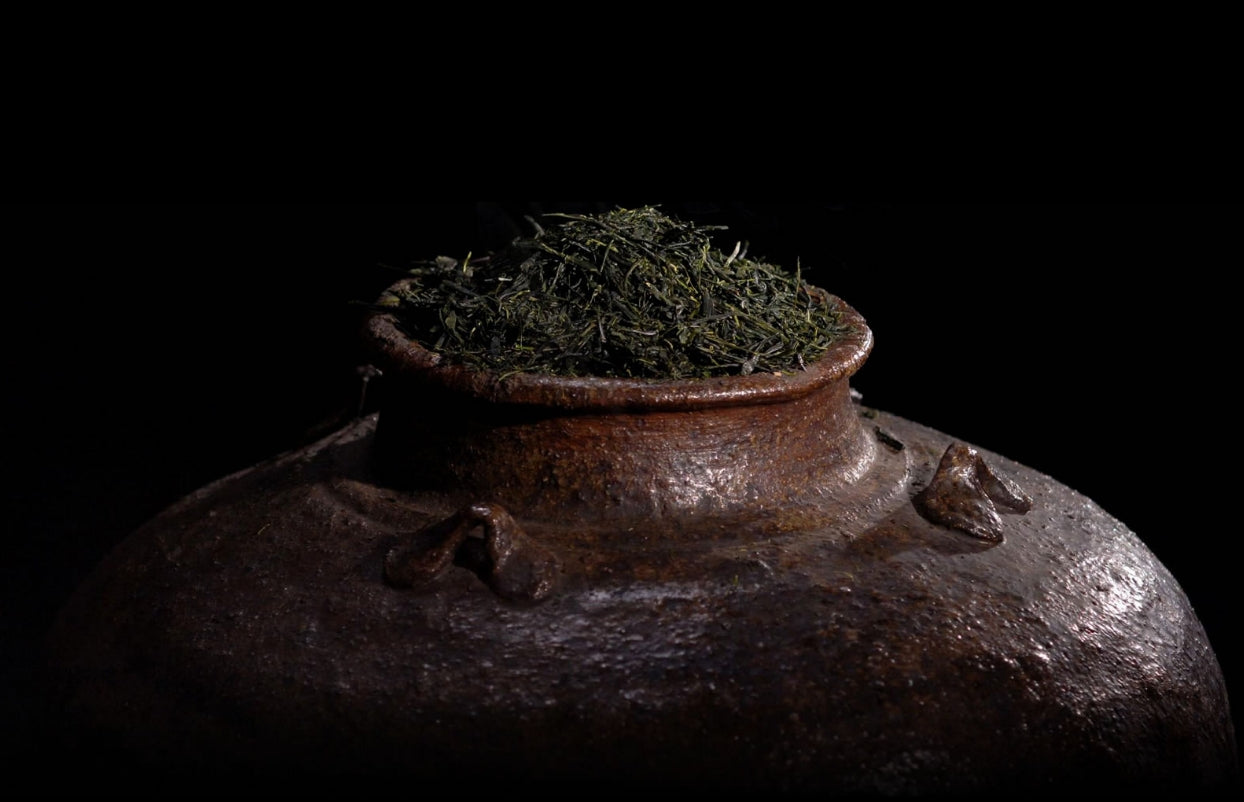
The custom of tea-drinking started as etiquette among the upper class and then diffused as a social tool into the samurai society, until the point that it was completed as sado or the Japanese art of the tea ceremony. It became the foundation for Japanese culture based on courtesy and hospitality. Along with a number of masters of the tea ceremony including MURATA Juko, TAKENO Joo and Sen no Rikyu, it were the tea merchants that supported the tea culture. Particularly, tea merchants in Uji who continuously improved existing teas and invented new tea variations such as sencha and gyokuro, contributed to making Uji Tea famous as a representative for Japanese tea in general.
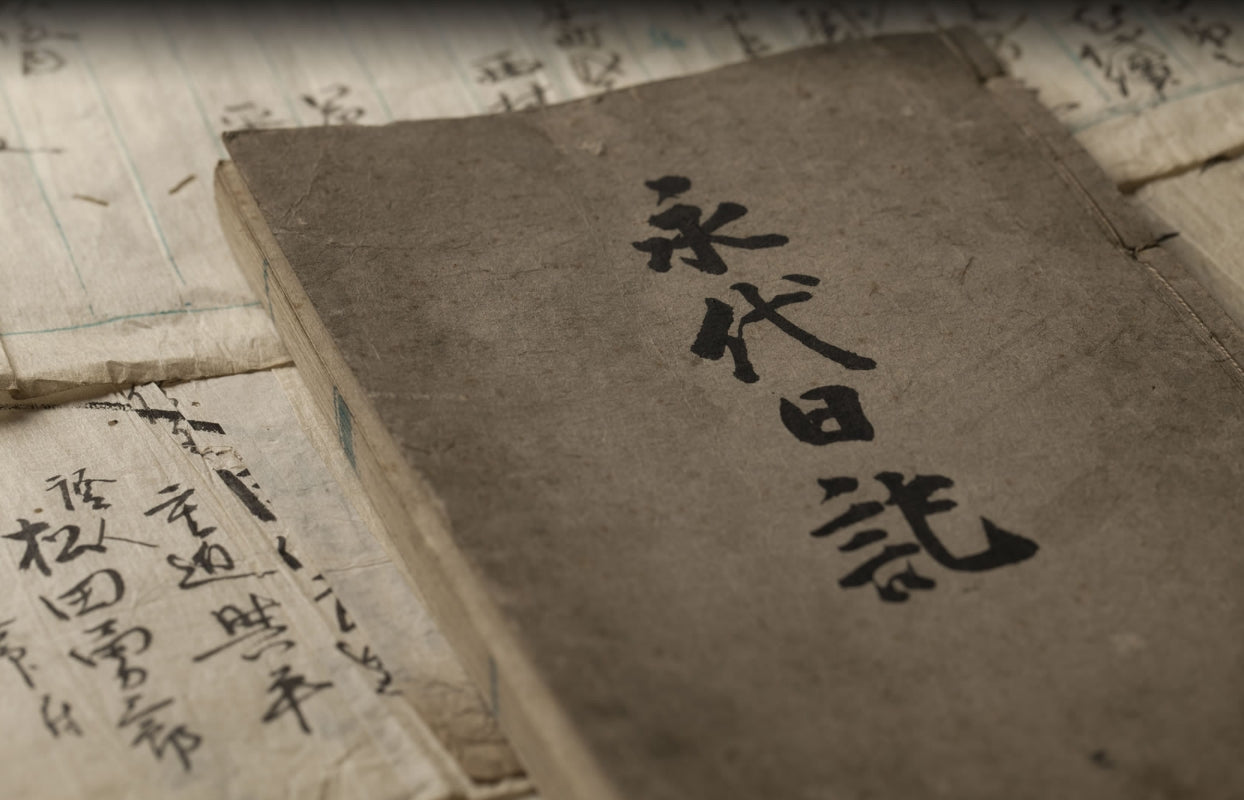
In 2012, we discovered many ancient documents including the one titled Eidai Nikki among our family property.
The content of these documents led to new discoveries about our family history. Successively, we revised our family history accordingly in 2013 (Heisei 25):
Nakamura Tokichi?the history of the brand extends back to 1819 (Bunsei 2), when the parents of NAKAMURA Tokichi I met each other.
Rokubei, the father of Nakamura Tokichi I, was born the son of Kyubei, a sheet metal worker in Fushimi, but was adopted by a thatched-roof craftsman KONAKAMURA Rokuemon early in life and took to the profession of his adoptive father.
The rule of the shogunate was about to end and the people called out the famous slogan, ‘Revere the Emperor and expel the barbarians.' The long period of national isolation was about to end. In the first year of the Ansei era or 1854, Tokichi, the second son of Rokubei, also becomes a tea merchant and establishes the tea firm, “Nakamura Tokichi,” at Rokuban-cho of Ujibashi-dori, bearing the family name of Nakamura. For about three years after its establishment, the company was known as "Hoshino Soyotei Nakamura Tokichi," "Maruya Tokichi," and "Nakamura Tokichi," on which he punned for the current trade name, “ Maruto.”
Maruto.”
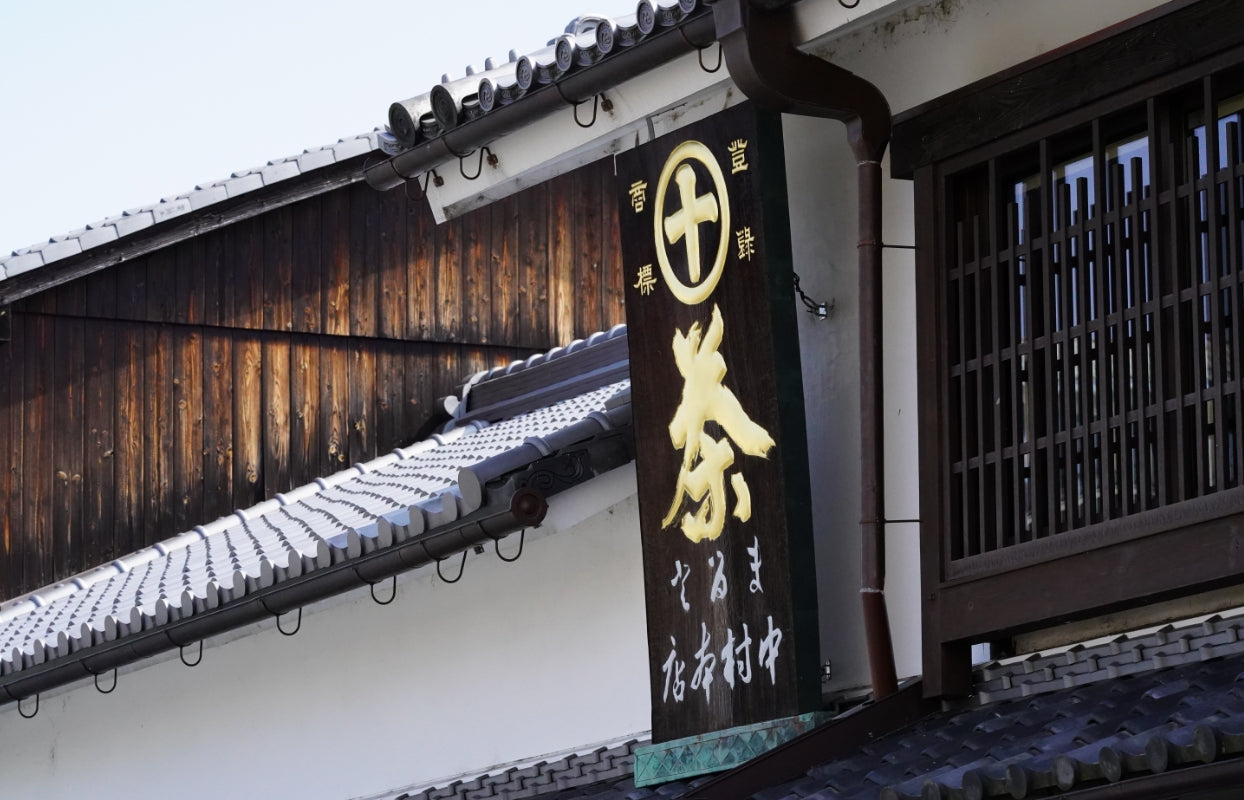
Forefeeling a new era, Tokichi succeeds in matching the times and expanding his business.
Because Tokichi had an older brother, Kyushichi, and thus was the second son, he was able to act independently. He didn’t need to hesitate in order to take the plunge into a new world as he was free from his family business and thus free to found his own. He had great abilities to understand the times and the flow to connect people. He also stayed involved with the Hoshino family to whom his father had served. Establishing branches in Yoneko and Matsue with support from the Hoshino family, he made his name widely known to the world.
The presence of the nure-sagi lantern in our current Main Store also suggests his connection with the Matsudaira family in Matsue; the style was favored by MATSUDAIRA Harusato, the seventh domain lord of Matsue in Izumo, who was also known as the Tea Master ‘Lord Humai.’
Tokichi also raised a piece of calligraphy which was granted by KATSU Kaishu, a hero at the end of the Edo period, at the entrance of the Main Store and made it his family motto; it reads, “Chaen eijitsu kaoru”?Devote to the tea business in Uji through the generations of the remotest descendants and nurture the fragrant smoke of the tea day in, fay out to never let it vanish.
In 1856 (Ansei 3), Tokichi married Mume, the first daughter of TANEMURA Kichizaemon, the sixth headmaster of a family in Uji-go (Uji Hamlet), to have four boys and three girls including his first son, Yoshitaro. Yoshitaro is the second successor to the name of Tokichi, followed by his descendants?Ukichi (Tokichi III), Toji (Tokichi IV), Fukuya (Tokichi V) and the current family head, Toji. Meanwhile, the firm has solely dedicated to tea business through the ages for nearly 160 years with good faith as its guiding principle.
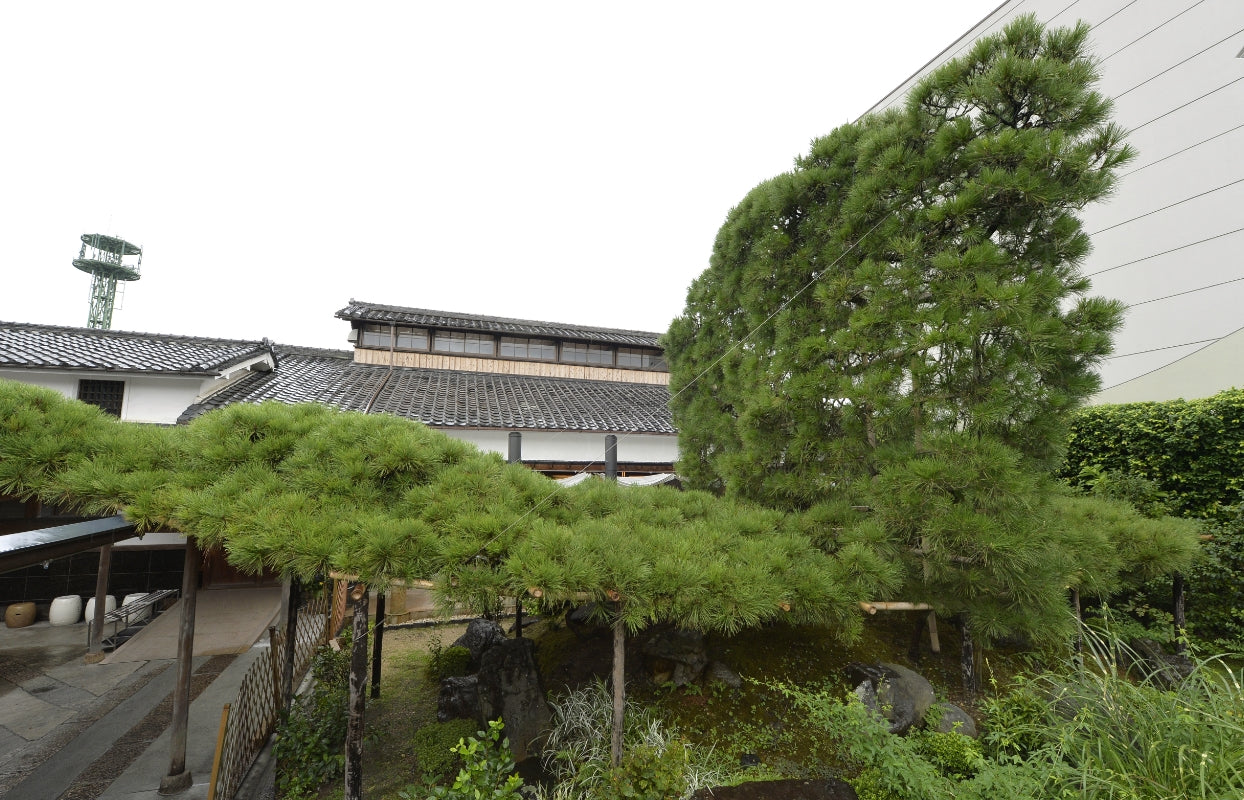
The Horai Funamatsu, an approximately 250 year-old Japanese black pine in the courtyard, which was selected for the 100 Most Famous Trees of Uji City, was planted by Tokichi II, charged with the wish for a prospering business and the safety of the family. The tree has watched over the history of Nakamura Tokichi. Tokichi II succeeded in the automation of tea grinding stones and obtained a patent for it. The firm presented tea for “the Coronation of Emperor Taisho” in 1915 and “the Coronation of Emperor Showa” in 1928, having the honor of being a purveyor to the Imperial family.
Including the closely guarded “Nakamura-cha (Nakamura Tea),” the house blend of the Nakamura Tokichi brand, Nakamura’s Tea has been long and widely loved.
In 2001, we renovated our tea factory into a cafe area. The wish of the current Tokichi has borne fruit; he hoped to let more people enjoy the good flavor and bliss of tea by serving Uji Tea and matcha sweets. A mixture of the refined mellow taste and a sweet, fresh flavor. By adding inventive ideas to our 160-year-old tradition, Nakamura Tokichi continues to carve out a future for Uji Tea as a tea merchant representing Uji in order to pass down tea culture, which has blossomed in Uji, to the next generation.
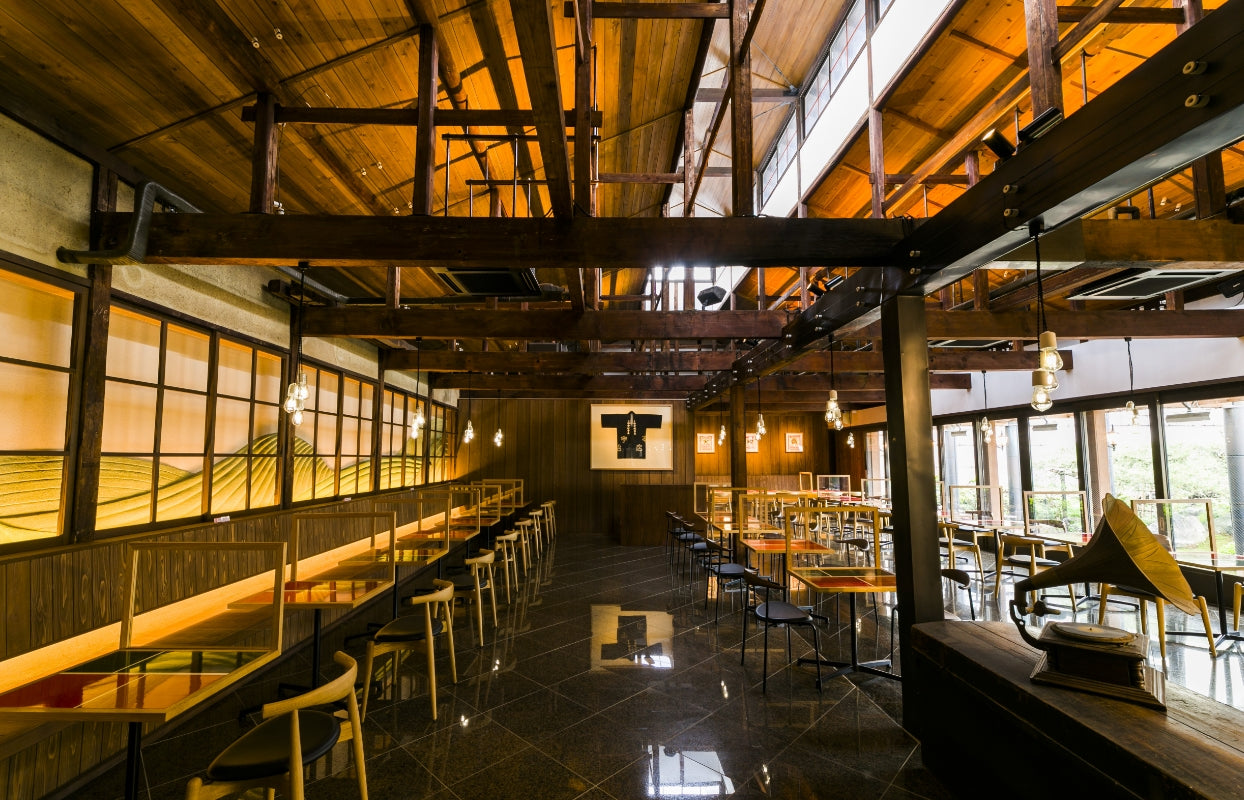
In 2009, the buildings which the previous and current family heads have conserved were selected as “important cultural landscapes” of Japan as they inherit the scenery of a typical tea firm in the Meiji era.


